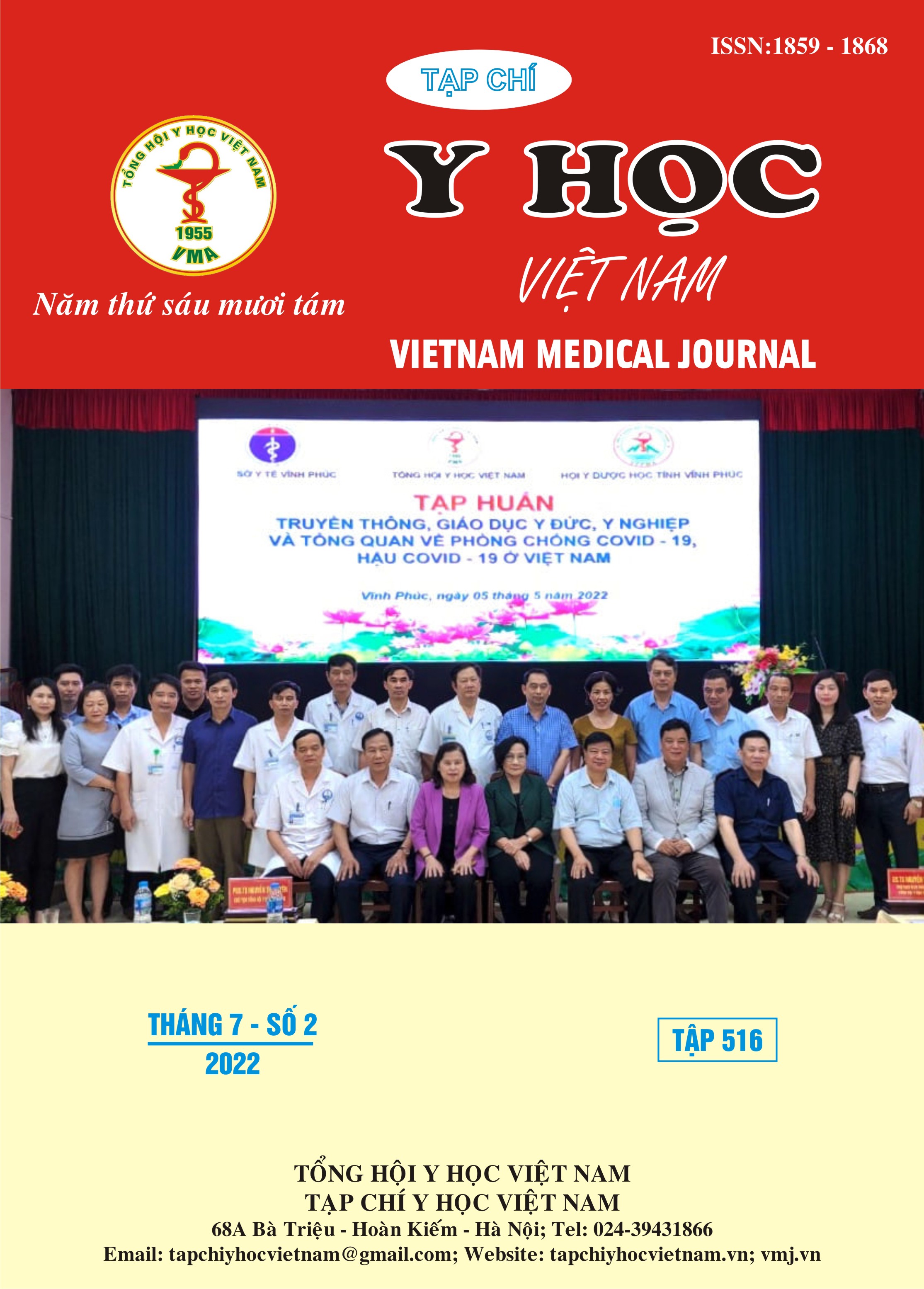MỘT SỐ YẾU TỐ LIÊN QUAN ĐẾN KẾT QUẢ CẤP CỨU NGỪNG TUẦN HOÀN Ở TRẺ EM
Nội dung chính của bài viết
Tóm tắt
Mục tiêu: Tìm hiểu một số yếu tố liên quan đến kết quả cấp cứu ngừng tuần hoàn ở trẻ em. Đối tượng và phương pháp nghiên cứu: Nghiên cứu mô tả cắt ngang trên 102 trẻ ngừng tuần hoàn tại Bệnh viện Nhi Trung ương từ tháng 6/2018 đến tháng 6/2019. Kết quả: Tỉ lệ cấp cứu thành công (có tim trở lại) ở nhóm đã được mắc monitor theo dõi cao hơn so với nhóm chưa được mắc monitor (70,1% và 33,3%), (p<0,05). Tỉ lệ cấp cứu thành công ở nhóm chưa được sử dụng thuốc vận mạch cao hơn so với nhóm đã dùng thuốc vận mạch (67,7% và 61,5%) và nhóm đã được đặt nội khí quản cao hơn so với nhóm chưa đặt nội khí quản (65,6%và 63,2%) nhưng sự khác biệt không có ý nghĩa thống kê (p>0,05).Tỉ lệ tử vong cao nhất ở nhóm nhịp chậm (91,7%) và thấp nhất ở nhóm vô tâm thu(52,3%), (p<0,05). Tỉ lệ sống khi ra viện ở nhóm tiêm Adrenalin tĩnh mạch ≤3 liều cao hơn so với tiêm Adrenalin tĩnh mạch >3liều (100% và 46,3%). Tỉ lệ sống ra viện cao nhất ở nhóm cấp cứu ngừng tuần hoàn ≤10 phút và thấp nhất ở nhóm cấp cứu >30 phút, (p<0,05). Khi phân tích đa biến, sử dụng Adrenalin tĩnh mạch và thời gian cấp cứu ngừng tuần hoàn là các yếu tố liên quan đến hiệu quả cấp cứu ngừng tuần hoàn (p<0,05). Kết luận: thời gian cấp cứu ngừng tuần hoàn, sử dụng Adrenalin tĩnh mạch là những yếu liên quan đến hiệu quả cấp cứu ngừng tuần hoàn.
Chi tiết bài viết
Từ khóa
yếu tố liên quan, kết quả cấp cứu, ngừng tuần hoàn, trẻ em
Tài liệu tham khảo
2. Tress EE, Kochanek PM, Saladino RA, Manole MD. Cardiac arrest in children. J Emergencies Trauma Shock. 2010; 3(3):267.
3. AtkinsD., Everson-StewartS., SearsG.K., et al. Epidemiology and outcome from out-of-hospital cardiac arrest in children: the resuscitation outcomes consortium epistry-cardiac arrest. Circulation, 2009; 119:148-4.
4. Tania Miyuki Shimoda-Sakano, Cláu-dio Schvartsman, Amélia, et al. Epidemiology of pediatric cardiopulmonary resuscitation. Jornalde Pediatria, 2020; 96 (4), 409-421.
5. K. Maconochie, Robert Bingham , Christoph Eich , et al. European Resuscitation Council Guidelines for resuscitation 2015; Section 6. Paediatric life support, Resuscitation, 2015; 95, 223–248.
6. Lopez-HerceJ, GarciaC, DominguezP, et al. Characteristics and outcome of cardio respiratory arrest in children. Resuscitation, 2004; 63:311-20.
7. Martha Matamoros, Roger Rodriguez, Allison Callejas, et al. In-hospital Pediatric Cardiac Arrestin Honduras. Pediatric Emergency Care, 2015; 31(1):31-5.
8. Jung Lee, Wen-ChiehYang, En-Pei Lee, et al. Clinical Survey and Predictors of Outcomes of Pediatric Out-of-Hospital Cardiac Arrest Admitted to the Emergency Department, Scientific Reports, 2019; 9 (1):7032).
9. Berg, M. D. et al. Part 13: Pediatric Basic Life Support. 2010 American Heart Association Guidelines for Cardiopulmonary Resuscitation and Emergency Cardiovascular Care. Circulation 122, S862–S875 (2010).


